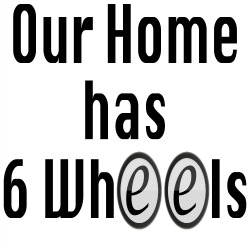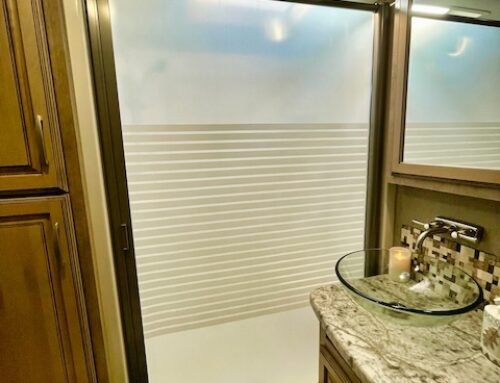Emergency Communication Electronics for Paddlers
Kayakers & canoeists should carry some kind of electronic communication device with them while on the water, preferably on your person in case you get separated from your boat. The level of sophistication, their small size and affordability of modern emergency communication devices really leave no excuse for not doing so. If you do find yourself in a life-threatening situation the ability to call for help and perhaps knowing that your distress call has been received, is priceless and may save your or someone else’s life.
Emergency communication for paddlers used to consist of a whistle and flares, and you contacted your paddling buddies by shouting and waving paddles. While whistles and flares should still be part of your safety equipment, VHF marine radios, cell phones, and satellite devices add a whole new level of safety for paddlers on the water and off. If you are serious about your safety on the water you should consider carrying at least one of these devices with you. However, before you run out and buy one, have a look at the advantages and limitations of each type of device.
Cell Phones
Just about everyone has a cell phone, and rarely are any of us without them. They are incredible devices for keeping in touch and if you get into trouble it’s as simple as dialing 911. Unfortunately, phones on the water, particularly salt water, have some serious limitations and while they can still be useful to you, you should seriously consider carrying some other type of device as well.
With iPhone 14 and iPhone 14 Pro models, you can now use Emergency SOS via satellite to text emergency services when you’re out of cellular and Wi-Fi coverage. You can also use the Find My app to share your location with people via satellite. This new feature is a game changer for people traveling into remote areas where you don’t not have cell service and are not carrying other devices such as satellite messengers. Keep in mind that this is strictly an emergency service and does not allow you to use it like a satellite messenger which allows you to send and receive messages from friends, family etc. So far the service is free for the first 2 years if you purchased the phone new and Apple yet hasn’t announced what service charges will be for the service.
Advantages
- The primary advantage is you probably already own one, so take it with you
- They generally work well around populated centers
- Quick access to emergency services with 911
- 2-way communication with rescuers
- Access to weather and tide and current information with apps
- Access to mapping and GPS with apps
Disadvantages
- Cellular service may be poor or unavailable. This is generally not a problem if you are paddling around major centers. However, in more remote locations, it becomes one. Before you plan a trip, make sure of your phone plan’s cellular coverage.
- Cell phones require a waterproof case and just as importantly, one that allows you to use the phone while it is in the case. This may seem a little obvious, but you would be surprised at how many people set out with their phones in a pocket or, stuffed in the bottom of a dry bag. If you do capsize, the unprotected phone will immediately be rendered useless and the phone in the dry bag will be either inaccessible, or once again,will be ruined when you pull it out to use it. Note: If you do dunk your phone in salt water, or if it gets splashed with salt water, it will be permanently destroyed.
- Relatively short battery life. Everyone can forget to charge their phone, so before you go, make sure your batteries are fully charged.
Tip: If you are having trouble getting a 911 call out due to sketchy cell service, try texting. Texting, unlike a phone call only requires an instant of contact with intermittent cell signals to get the message out.
VHF Marine Radios
Handheld VHF Marine Radios have become very compact, very waterproof and with the addition of DSC emergency calling, have become an excellent choice as a emergency signalling device. However, there are some things to consider before making the choice to buy one, as there is more to owning a VHF radio than just purchasing it.
- Licensing: In Canada, you must have a Restricted Operator’s Certificate Marine or ROC(M) to transmit on any marine radio, whether a handheld or a fixed set. (Simply listening to a broadcast does not require a certificate.) So, you will need to learn basic radio procedures, the phonetic alphabet, and regulations and penalties for improper use. Industry Canada has delegated the examination and administration of the ROC-M certification program to Canadian Power and Sail Squadrons (CPS). You can either take a VHF course or study the “Canadian Power & Sail Squadron (CPS) Maritime Radio Course manual”. You then take a test with an approved registered examiner, who will send in your application to get your ROC(M). Your license is good for life. If you have obtained your licence before 2005 you should upgrade to become familiar with DSC (Digital Selective Calling) features.
- In the U.S. the FCC (Federal Communications Commission) has done away with operator and station licensing for most recreational boaters when using certain types of marine radios. However, all radio operators, licensed or not, are still required to be familiar with and adhere to the FCC rules and regulations governing the use of their radio.
- A VHF radio is not a toy, nor is it like using a FRS (Family Radio Service) or a CB (Citizens Band) whose services are badly abused with unnecessary chatter. Improper or misuse of your VHF radio can lead to fines, imprisonment, and recovery of all costs associated with that misuse.
Advantages
- Verbal Emergency calling via the channel 16 emergency channel
- One button emergency calling with the DSC ((Digital Selective Calling ) emergency key (Not all handheld VHF radios will have this feature). If your radio is properly registered, this feature will let the rescue services know who is calling and if your radio is equipped with GPS, your exact location. Make sure you register your radio and get your MMSI number. If you don’t, this defeats most of the benefits of this safety feature.
- 2-way communication with other paddlers, boaters, coast guard, & rescue centers
- The ability to listen to and monitor marine weather forecasts
- Easy to carry and easily clipped to your PFD (personal floatation device).
- You call can be picked up by multiple sources. Around major centers there are lots of boats and stations that may pick up your call meaning that rescue could be very close.
- They are waterproof (VHF radios have different waterproof/submersible ratings depending on the model)
- Some models float if dropped in the water
- No subscription fees
Disadvantages
- You can’t just buy and use them, they require training in use and licensing.
- Handheld units are relatively low powered, around 5-6 watts with very small antennas, (an average VHF found on a power boat is 25 watts with antenna’s 8′ or more off the water). With a kayaker’s very low position in the water the effective range of a handheld VHF radio is only around 5 nautical miles, or realistically, line-of-site. If you are tucked away in remote areas without much boat traffic, no one is likely to hear your call.
- You need to regularly monitor your batteries to make sure they are not dead before you set out. It is very easy to leave the radio on leading to dead batteries the next time you go out. Most units come with rechargeable batteries so, unless you purchased an additional battery pack, you can’t simply change batteries.
- In spite of the waterproof/submersible ratings marine radios have, it is a good idea to keep them in a waterproof bag that will allows you to still use the radio. Long term exposure to salt water can lead to damaging corrosion. If you are not using a waterproof bag, make sure your radio is rinsed well in fresh water when you get home.
- Not all models float, so they should be tethered in some way.
Personal Locator Beacons (PLB’s)
These devices are intended for life threatening emergencies only. PLB’s incorporate three levels of signal technology – GPS positioning, a 406 MHz signal and 121.5 MHz homing capability – the PLB’s will quickly and accurately relay your position to a worldwide network of SAR (search and rescue) satellites financed by international governments. When rescue parties get close they can zero in on the 121.5 MHz homing signal. So, if your needs are strictly the most reliable emergency beacon available, PLB’s are the best choice.
Warning: I will state this again, PLB’s are intended for life threatening emergencies only. Using this device because you’re cold and tired does not constitute an emergency and setting off your PLB in these cases may get you into serious trouble with the authorities.
Advantages
- Coverage is world-wide using government funded satellite and rescue coordination centers.
- Each device has a unique coded signal, so if you’ve registered it properly, SAR personnel will know who you are and the type of vessel they are looking for. Your owner’s manual will tell you how and where to register them. It is unlawful to use an unregistered PLB.
- Simple to activate, making them easy to use for stressed or injured users.
- Along with your distress signal, PLB’s transmit a precise GPS location and continue to transmit a homing signal once activated.
- There are no subscription fees
- Waterproof
- Most float, but they should be tethered so they can’t accidentally be dropped by cold fingers and lost. The Aqualink shown in the picture above floats, whereas the ResQlink does not.
Disadvantages
- PLB’s do not allow you to specify a degree or type of emergency.
- They do not let you know if your signal was received.
- The batteries will need to be replaced after 5-6 years, which may run in the $150.00 range.
Satellite messengers
These devices broadcast to commercial satellites rather than government SAR satellites. The signal is sent to a commercially funded Emergency Response Center, which will then alert the appropriate SAR rescue agencies worldwide. The huge advantage that these clever little devices offer beyond sending distress calls, is they allow communication from almost anywhere in the world. This provides a whole new level of security and peace of mind not only for the adventurer, but for your loved ones at home.
Advantages
- The advantage that satellite communicators have that PLBs don’t, is that you can email or text messages to advise of your location, or you can send an email to designated people in situations where you need to be bailed out, but really don’t need to instigate a full scale emergency response.
- You can activate a tracking feature that updates your location at regular intervals.
- Waterproof
- Simple to activate an SOS
- Some models can be used for regular communication via email or text
Disadvantages
- The range of coverage of satellite messengers is a little more limited than PLB’s and they are lower powered devices, but as long as you can get a clear view of the sky, usually not a problem if you are on the water, they will still work almost anywhere on the planet.
- Because your signal first goes to a commercially funded emergency response centre, it has to be rerouted to the appropriate local SAR agency. This extra step adds a slight risk of your signal not getting through the correct authorities.
- If you are down in narrow canyons and under forest cover, these devices may not get a signal out.
- Require activation (with fee) and monthly or yearly subscription fees
- Most don’t float so should be tethered
Satellite messengers come in a couple of variations. I like to classify them as ones that will transmit a message one-way and others than can provide two-way communication. All satellite communicators are subscription based. Once purchased, they must be activated and require a service plan of some kind which can be paid yearly or monthly. Let’s look at the various types.
1-Way Transmit only Satellite Messengers:
SPOT Gen3
The SPOT Gen3 is an example of a satellite communicator that will only send messages. It is a simple, light weight, very compact, and affordable unit allowing you to check in with friends or family, send custom messages and let others track your location in real-time via Google Maps, or in an emergency, transmit an SOS with your location to SPOTS’ GEOS Emergency Response Coordination Center.
Features of the SPOT Gen3
- SOS / 911: This button is used in the event of a life threatening or critical emergency to notify emergency services that you need assistance and also gives them your exact GPS location. The Emergency Response Center will alert the appropriate emergency service worldwide.
- Help: If the emergency is not life threatening, this button is used to notify your personal contacts that you need assistance and give them your location. You can also purchase additional SPOT Assist* services which can be programmed to the Help button. In this case, when activated with SPOT Assist, the Help button will notify the appropriate professional land based or water based towing services.
- *SPOT Assist: Additional paid service is required for this feature. You should note that once you have added SPOT assist you can no longer use the Help button to contact friends or family.
- Check-in/OK: This button allows you to send your friends and family (up to 10 contacts) a pre-programmed email with a link to Google Maps or text an SMS message with your GPS coordinates, to let them know that all is OK. Your waypoint is also stored on your SPOT account for later reference.
- Custom Message: This button allows you to send a custom message, by text or email, which you create on your computer before you leave. It will be sent to your contacts with your GPS location, and with an email, a link to Google Maps. This function can be used as a secondary OK message or you can transfer your personal help alert to this message function if you are using a SPOT Assist service on your Help button.
- Tracking: Allows your contacts to follow your progress online in near real-time and save way points so you can review your entire route at a later date. This function is available as an upgrade to your basic service package.
Advantages
- It is very small, light, and easy to carry.
- Very affordable and the subscription rates are very reasonable. That makes it is easy to get this device up and running and available to use all year long so you can take it hiking, biking, paddling or whatever you do.
- It is fully waterproof
- It is powered by 4 AAA batteries, so you don’t have to worry about running out of juice and having to recharge the device on a long trip…just carry extra batteries.
- Peace of mind for folks at home
Disadvantages
- Doesn’t float, so make sure you have it tethered. The original SPOT did float, but the sacrifice was a much bigger size.
- The other disadvantage is the relatively low powered transmitter, only 0.4 watts. My experience with earlier versions of the SPOT was that not every signal made it out, even in clear sky conditions.
- The other minor disadvantage of a 1-way transmitter like the SPOT, is there is no way to know whether your message did get out.
2-Way Satellite Messengers
The inReach SE+ and the inReach Explorer+ offer two-way satellite communication via SMS texting or email. The manufacturer, Garmin provides global coverage anywhere in the world using the very reliable Iridium satellite network.
Garmin inReach SE+
Features of the inReach:
- Push-of-the-button SOS (it does have a safety lock button that must be slid over to prevent accidental activation)
- Texting: You can send messages (up to 160 characters) using the directional pad and the view screen right on the SE, enabling you to use it as a stand alone device. However, you can also pair the SE with an iPhone, iPad or Android device and use the much more convenient keypad on those devices to type your messages.. As well, you can post tracks and messages on inReach Earthmate app so family and friends can see exactly where you are.
- Preset Messages: Using the “X” button or accessing them from the screen, there is set of pre-programmed messages you can send, especially useful if you are using the SE as a stand alone device and don’t want the delay of trying to write a message with the direction arrows and virtual keyboard, which can be tedious.
- Tracking: Accessible from the screen, you can preset the frequency of the tracks you wish to send out from 10 minutes to 4 hours.
- Can be linked to a smart phone via Bluetooth. (more about this feature later in this post)*
Advantages
- 2-way communication. If you are in a life threatening emergency you can be in contact with the rescuers, so you know help is on the way. This also enables you to keep rescuers apprised of your situation and exactly where you are.
- Regular communication via email or text. This feature can bring a great deal of peace of mind for family members left at home. My wife and my parents will attest to this since I first started using these devices on my 2 week paddling trips. Not only are they able to follow along and see where I am each day, but being able to receive and send me messages is priceless!
- Waterproof
- *The inReach can be linked to a smartphone with Bluetooth via inReach’s free Earthmate app. The ability to link the inReach to you smart phone or tablet is invaluable. The combination of a much more user friendly keyboard, and that the app will automatically sync with your mobile device’s address book, makes texting messages far easier. You can also transform your smartphone or tablet into a navigation tool with unlimited access to DeLorme’s downloadable topographic maps and US NOAA charts. Sadly, Canadian Charts aren’t available.
Disadvantages
- The rechargeable batteries need to be monitored to make sure that they are fully charged. If you need the device and the batteries are dead you can’t just replace them. However, the batteries in this unit last a long time, about 100 hours of battery life even while in the 10 minute tracking mode. If you are only using it for communication sporadically, you probably don’t have to worry too much about battery life. On longer kayak trips, I carry the JOOS Orange Solar Recharger, and awesome combination battery and solar charger in one compact, waterproof package. It can recharge both the inReach and my iPhone.
- Texting as a stand-alone device using the direction arrows and virtual keyboard is very slow and tedious although it does have a predictive keyboard. It is much easier to connect to a smart phone if you are going to message. Keep in mind you won’t be doing this on the water in an emergency.
- Doesn’t float. While the inReach is fully waterproof it should be tethered, preferably to you. You can buy an floatation lanyard which does provide flotation in case it does get loose.
- Subscription services are a little more expensive than SPOT but you are getting more. However, you can upgrade to other plans anytime you like at no additional charge other than the increased subscription rate, so if you are planning a trip and want some lower cost texting, you can upgrade your plan. If you are not using your inReach for extended periods, you can also suspend your service for a very minimal fee. The advantage of doing this is you will avoid the re-activation fee. Click this link for more information on Canadian inReach subscripton plans.
- Click this link for a complete list of US inReach subscription plans.
Garmin inReach Explorer+
 The Explorer is essentially the same device as the SE+ but adds the following functions:
The Explorer is essentially the same device as the SE+ but adds the following functions:
- You can create & view routes, set waypoints, see detailed GPS tracks, and navigate with the on-screen map view.
- Built-in digital compass, which provides heading and bearing information even when standing still.
- You can plan your routes and waypoints ahead of time using the Explore portal which you can also share your with family and friends.
Advantages
- All the same pros as the inReach SE+ with the addition of GPS navigation and a compass.
Disadvantages
- Same as the inReach SE+ listed above.
Final thoughts on Satellite Communicators
I really like satellite communicators, having used both the SPOT and the inReach. They are very easy to carry, easy to use and they provide some real peace of mind while on the water and very importantly, peace of mind for family and friends at home. I know my family loves being able to see where I am when I am on a paddling or RV trip and knowing that I am safe. Being able to communicate two ways with the inReach is even better.
All of these devices require a clear view of the sky. If you are down in narrow canyons or under heavy tree cover, you may not be able to get a signal out. These types of tracker are very low powered compared to Personal Locator Beacons (PLB’s), which transmit at around 5 watts. (compared that to 1.5 watts for the inReach and 0.4 watts for the Spot),
so there may be situations where they may fail to bail you out. The amount of wattage transmitted is always a trade off, for example, the
SPOT could probably be designed with higher power, but that means a shorter battery life and/or a much bulkier unit.
One other minor concern of all satellite messengers is for those at home waiting for messages. What happens when they don’t get a message for some reason? Loved ones can really start to worry when they are expecting regular updates and then they unexpectedly stop. If for some reason the device quits altogether, do your loved ones panic and send out the rescue team? This is a hard question to answer, but it is something that should be discussed and worked out with your friends and family before you leave on a trip. In spite of that, I still think that the advantages of satellite messengers far out-weigh this minor dilemma.
Conclusions
Whatever electronic emergency signalling device you choose, you will be able to paddle and explore with a little more confidence and peace of mind. However, they are not a substitute for common sense, preparation and good paddling skills, and keep in mind, that any electronic device is fallible, so don’t forget those flares. Also, remember that there is a level of responsibility that goes along with using the emergency features of any of these devices. Just because you are cold, wet and tired doesn’t constitute an emergency.
Safe Paddling!!
Bruce Holland


















The advantage satellite communicators have that PLBs don t, is that you can email or text messages to advise of your location, or you can send an email to designated people in situations where you need to be bailed out, but really don t need to instigate a full scale emergency response.
Thanks so much for your comment on 0ur post, ‘Emergency Communication for Paddlers’. Indeed that is the big advantage of satellite communicators. We always carry our inReach on when paddling, hiking and RVing.
Cheers!
Thanks for the awesome information! I highly appreciate it.
Thanks for the awesome information! I highly appreciate it.